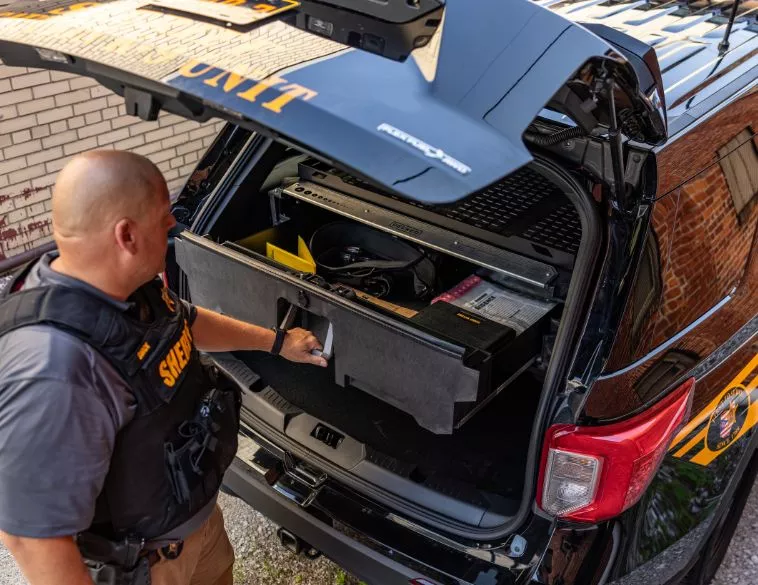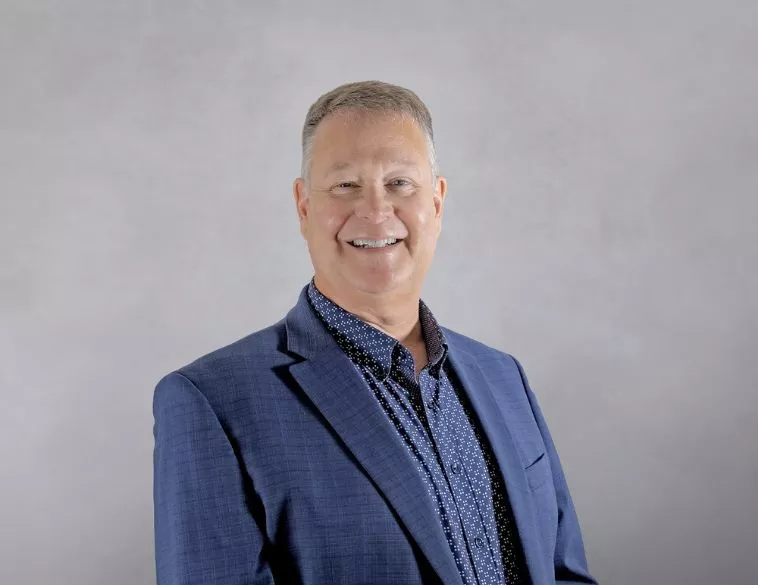Holman Hosts 2025 Fleet Forum
Trade, tariffs and Carney/Trump meeting loom large over this year’s event.

More than 100 fleet professionals from the Greater Toronto Area attended Holman’s 2025 Fleet Forum, which took pace on May 6th at the Angus Glen Golf Club in Markham, Ontario. By pure coincidence, this year’s event took place the same day Prime Minister Carney was scheduled to meet with President Trump in Washington to talk trade and tariffs. Not surprisingly, most of the presenters and panelists who spoke at this year’s Forum addressed the challenges fleets face today as we all try to navigate the economic uncertainty facing the world.
The program began with a welcome message from Brent Scowen, Managing Director of Holman Canada. Scowen spoke about the big political shifts that have taken place in the past fee months since Trump came to power. He acknowledged the uncertainty we face, both in Canada and the U.S. Despite all these challenges, he said, Holman remains committed to helping fleets navigate these uncertain times.
Scowen shared a message that Holman Chair, Mindy Holman wrote to her staff: “What do we do during these uncertain times? First, we control what we can control, and we do it well. Second, we continue to be who we are—a company that produces excellent results, seeks to take outstanding care of our customers, and gives equal respect and support to each partner in our Holman family in the pursuit of our purpose. Third, we look outward and we see what we can do for others. Finally, we move forward with trusted partners who can rise to this occasion.”
Economic outlook
——
Next, Erik Johnson, Senior Economist and VP BMO Capital Markets took to the stage to discuss tariffs and the economic pressures facing Canada. He explained that Canadians might see a bit of a tax relief as of July 2025, if the Liberal Government keeps some of the promises they made during the election.
He spoke about the stated goal of President Trump, who said that he wants to see manufacturing return to America, and explained that this is a very difficult goal to achieve. Johnson stressed that the modern manufacturing landscape is a global endeavour, and that it’s not easy for manufacturers to shift production to the United States. In order to make the switch, manufacturers would need to know their costs over the next five or 10 years, he explained, but they don’t even know what to expect over the next two months.
As for the idea of bringing aluminum production to the United States, Johnson explained that this is a process that requires a lot of electricity, which is why companies have set up aluminum production in places like Quebec where electricity is more affordable. It would therefore be difficult to process aluminum in the U.S. where electricity is more expensive.
Johnson provided a bit of an economic forecast: Canada was supposed to have a great 2025, he said, but now with all the Trump policies in place, Johnson is projecting a retraction. He predicted a moderate recession in Canada, unless the U.S. pulls back on tariffs.
The new and used vehicle market is going to have to deal with strong headwinds, he added. Tariffs will weigh on volume in both new and used vehicle sales, and lease buyouts will likely increase, which will further impact used car availability.
The good news is that the big shock caused by the tariffs is behind us, he said. Furthermore, inflation should drop, and the Bank of Canada is likely going to cut interest rates three more times this year.
Fireside Chat with OEMs
Kathryn Foster, Director, North American Strategic Services at Holman hosted an OEM panel with Helen Jackson, General Manager at Ford Pro Canada; and Bernie Moorcroft, National Commercial Sales Manager at Stellantis.
The panel discussed the challenges facing fleet customers as the automotive industry struggles to deal with the on-again-off-again tariffs. “We’re not going to see a clear picture anytime soon,” said Jackson. “This is a situation we’re going to have to endure for some time.”
While the stated goal of the Trump Administration is to bring manufacturing back to the U.S., everyone agreed that this is easier said than done. “We’re not making any long-term decisions based on what we’re seeing right now,” Jackson explained.
Moorcroft agreed. “Moving production from one plant to another is not simple or inexpensive,” he said. He explained that trying to untangle the current automotive supply chain, which is incredibly complex and intertwined would be possible to do, but it would be a very expensive undertaking, and it would take a lot of time to complete.
The panel switched gears to discuss electric vehicles (EVs), reminding all in the audience that although we have a new Prime Minister in Canada, government mandates for EVs have not changed. The Government of Canada is still committed to the goal of 100% zero-emission vehicle sales by 2035 for all new light-duty vehicles.
Jackson explained that Ford’s goal is to be a “one-stop-shop,” where fleets can acquire the electric vehicles they need along with the telematics to manage these vehicles, along with help setting up the charging infrastructure to keep them running.
Moorcroft said that Stellantis is focusing on a flexible approach, and that all new and future product offerings will be built on new, flexible multi-energy-capable platforms. He offered the example of the new Ram 1500, which is available with a number of internal combustion engine options. In addition, later this year, the company will be introducing the Ram 1500 Ramcharger, which is a full battery-electric pick-up truck with an onboard generator, and over 1,100 km of range.
Light-duty trucks
Ed Powell, Director at Holman Consulting Services took to the stage next for an in-depth look at light-duty trucks, and how fleets can minimize the total cost of ownership (TCO).
Powell crunched numbers, looking at three of the most popular light-duty trucks on the market, and how they compare when it comes to TCO from a cost-per-mile perspective. When comparing Ford vs. Ram vs. Chevrolet, he stressed the importance of looking at the complete picture when choosing the vehicle that’s right for your fleet.
Besides capital cost acquisition costs, fleet mangers need to consider maintenance costs, fuel costs, operating expenses, etc. Powell added that it’s critical to stick to the replacement cycles that make sense for your fleet, because the longer you keep a vehicle in operation, the more it will cost each year to fix and maintain.
“There is no bad truck,” he said. “It’s simply about weighing the individual scenario for your business and how it operates, reinforcing the importance of maintaining a consistent lifecycle.”
Powell talked about the importance of preventive maintenance (PM) compliance, noting that consistently overdue vehicles cost more in unscheduled maintenance. “The longer you keep a vehicle, the more PM compliance matters,” he added.
Another key strategy fleet managers can employ to minimize TCO is upfitting practices. In short, customization costs money and time, whereas standardization can cut costs overall. So before you upfit a vehicle with a custom solution, ask yourself whether you’re adding a feature because it’s a like-to-have or a must-have.
Navigating the changing political landscape
The program concluded with Peter Nogalo, Industry Relations Manager at Holman moderating a panel with guests Chantal Hébert, a prominent Canadian journalist; and David Frum, staff writer at The Atlantic.
Hébert and Frum spoke about the recent national election here in Canada, as well as the challenges our new Prime Minister is likely to face as he tries to navigate the choppy waters of uncertainty that the world is facing.
Frum stressed that the world is already seeing the consequences of tariffs. “Today’s meeting between Carney and Trump is unpredictable,” he said. “Typically, when world leaders meet face-to-face, all the issues that they need to discuss are already settled before their meeting takes place,” he explained. “In this case, there is no plan, and Carney doesn’t even know if he’s staying for lunch.”
Hébert explained that although not everyone in Canada may be thrilled with another Liberal Government, the benefit of keeping the Liberals in power is that all the Ministers, Ambassadors, and key people with experience stay in place. There’s no need to put new people into these key roles, and have them deal with a learning curve before they’re up to speed with the major trade and political issues facing our country.
The other benefit, Hébert added, is that Prime Minister Carney understands economics, and due to his vast experience on both sides of the Atlantic, he knows the major players and will have an easier time getting things done.
As mentioned at the outset, Holman’s event took place the morning of Prime Minister Carney’s face-to-face meeting with President Trump in Washington. While many Canadians, including those who attended the Holman event, were keenly interested in this meeting and wondering what might happen, both Hébert and Frum stressed that we can’t expect this first meeting between the two world leaders to result in an instant solution to the tariff war, or to the “51st state” rhetoric.
Frum explained that Canada has, “one card to play, but it’s a good card. Canadians know that they didn’t start this fight. And Trump is not asking anything that Canadians can say ‘yes’ to,” he explained. “We know the truth of the situation. We will accept pain as the cost of our sovereignty. Americans on the other hand were promised lower costs, more jobs and a better economy.”
Frum then explained that Prime Minister Carney can play that card in one of two ways: fast or slow. The fast approach would mean that he would give President Trump a quick win so that Trump could say that he got a great deal. The other choice is to go slow and allow the pressures from the American people to build up from within the country in the next few months, which in turn will provide Canada with more leverage in negotiations.
In retrospect, we now know that Prime Minister Carney did not offer a quick concession that would have given President Trump a quick win. This could mean that he is thinking about a more long-term or slow solution, which could mean more pain for Canadians in the coming months.
“The easy part is looking at where our lemons come from at the grocery store,” said Hébert. “The hard part is when plants shut down and people lose jobs.” How long can that go on before Canadians blame Carney and stop blaming Trump? We shall have to see.
Holman’s Nogalo asked the two panelists where and when the Americans might choose to take an offramp to de-escalate tariff tensions. Frum noted that the mid-term elections are just around the corner. “Either the Republicans don’t understand that they’re going to lose the house and senate,” Frum said, “or they’re not going to let the elections take place in a free and fair fashion.”
Despite all the gloom and doom, Hébert noted that she is now more optimistic about Canada’s chances as we face all this uncertainty, than she was when Trudeau was in power. “I have solid hopes that this parliament will be a place where people will actually discuss real issues,” she said, “and I find that encouraging because it’s not pleasant to watch adults act like bad kids on a daily basis.”





